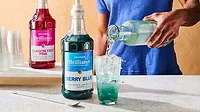Beverage-makers turn to advanced inspection equipment for product safety
Vision technology offers flexibility for today’s beverage packaging

Image courtesy of Metler-Toledo
In the “Arthur” episode “How the Cookie Crumbles,” Arthur and his friends make joke cookies by combining random ingredients to help cheer up their friend Muffy. However, when her butler bakes the cookies, Muffy learns what was a joke actually are tasty treats.
In traditional food and beverage manufacturing, unwanted ingredients and particles are not a joke and instead something that operations managers look to avoid at all costs.
As food contamination can occur due to improper handling of food products, cross-contamination, and the presence of pathogens or chemicals in food, X-ray food inspection equipment can ensure consistent product quality by detecting inconsistencies and contaminants.
For example, in The Business Research Company’s report titled “X-Ray Food Inspection Equipment Global Market Report 2025,” the market research firm notes that this food inspection equipment can prevent costly recalls, while minimizing waste, and complementing other food safety measures, enhancing overall protection.
According to the report, the X-ray food inspection equipment market size is expected to grow to $2.94 billion in 2029 at a compound annual growth rate (CAGR) of 9.8%.
The report notes that the growth in the forecast period can be attributed to the rising shifts toward non-destructive testing methods, a growing focus on reducing food waste, growing consumer preference for transparency in food safety practices, increasing focus on allergen management, and rising investment in research and development.
“Major companies operating in the X-ray food inspection equipment market are focused on developing advanced solutions, such as dual energy detector technology, to enable more precise identification of contaminants and ensure the safety and quality of food products,” the report states. “Dual-energy detector technology uses two distinct X-ray energy levels to capture images, allowing the differentiation of materials with similar densities based on their absorption and transmission of X-rays.
“For instance, in September 2022, Mettler-Toledo International Inc., a U.S.-based manufacturer of precision instruments, launched the DXD and DXD+ technologies,” the report continues. “These X-ray inspection methods provide better identification capabilities for low-density contamination in packaged food goods.”
Last fall, Mettler-Toledo unveiled its next-generation X-ray system: the X6 Series, to enhance food safety compliance and boost productivity.
The X6 models, like the X2 Series, feature advanced detection technology but are specifically designed for larger product formats, the company noted in a November press release. With multi-lane capabilities, the X6 Series makes inspection for manufacturers handling bigger products or multiple packages in each line, quicker and easier, while providing flexibility for food and beverage brands that require efficient inspection solutions for varying product sizes and configurations, according to the company.
Mike Pipe, head of global sales and product management at Mettler-Toledo Safeline X-ray, stated: “With the launch of the X6 Series, we are excited to extend the capabilities of our X-ray inspection solutions — building upon the global success of the X2 Series — to larger packaging and multi-lane applications. The X6 Series offers significant improvements in mechanical design and performance compared to previous generations, providing enhanced control over product safety, reducing downtime and helping manufacturers remain competitive in today’s market. And all of this is achieved at an affordable price, making it accessible for businesses of various sizes.”
Last December, Califia Farms, Los Angeles, announced it had installed an advanced V31 vision inspection system from Mettler-Toledo on their main packaging line to help ensure every bottle leaving its facility meets the company’s high standards.
“We had two main goals for our new vision system. The first was to verify proper cap placement on every bottle to maintain package integrity, and the second was to monitor our upstream filling and closing equipment to optimize production efficiency,” said Keith Meadows, director of engineering at Califia Farms, in a press release. “We considered multiple vendors, looking at equipment quality and reliability. The V31 came highly recommended by our sales rep and solutions engineer, Angelica Amancio of Pacific Packaging and Inspection, and Mettler-Toledo's great customer service sealed the deal.”
Mettler-Toledo’s modular V31 vision system can inspect caps, lids and/or labels at speeds up to 1,000 packages a minute. Califia’s system is equipped with three cameras for identification and removal of high caps, damaged caps, broken shrink bands and other closure issues, the company notes. The system handles bottles ranging from 10.5 to 72-ounces in size, which are sealed with either a combination foil seal and closure or with a cap with a tamper-evident band.
Martha Cervantes, QA continuous improvement specialist at Califia Farms, stated: “One of the biggest advantages of the V31 is its flexibility. We often changeover this line several times a day to accommodate our many beverage types and bottle sizes, and our vision system transitions seamlessly. A simple recipe selection and height adjustment is all that’s needed, and we’re ready to run in under five minutes.”
The V31 at Califia includes customized features for their unique production requirements, including traceability capabilities to identify which station on the upstream capper is having an issue if the vision system sees an uptick in cap defects, it notes. It’s also equipped with a specially designed air nozzle that removes condensation before inspection for optimal accuracy.
“Space efficiency was another big consideration for us, and the V31’s compact frame was easily installed right over our existing conveyor system,” Patrick Fischer, senior engineering maintenance manager at Califia Farms, added. “The V31’s integration with our clean-in-place system significantly simplifies our cleaning protocols. It runs through an automated cleaning cycle, gets just a quick wipe-down by an operator, and we’re done.
As X-ray food inspection equipment can create detailed images of internal structures, enabling precise detection of contaminants, it’s apparent that advancements in this equipment is imperative to improving beverage safety, further protecting public health.
Looking for a reprint of this article?
From high-res PDFs to custom plaques, order your copy today!







